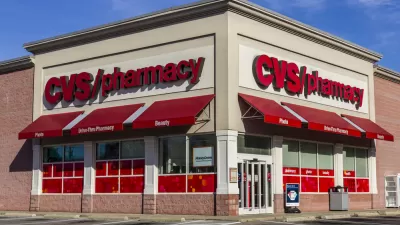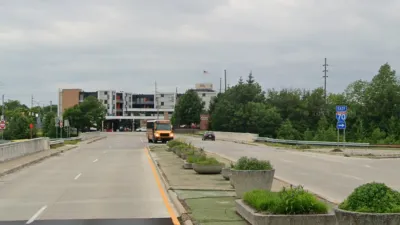How do you define a cool city? What makes a street or neighborhood hip? It's not too difficult to identify the right ingredients; it's putting them together that becomes the challenge.

Writing in the Indianapolis Business Journal, urban designer Tom Gallagher finds that Indianapolis' glowing reviews from Bon Apetitmagazine and Cushman & Wakefield -- describing the city as "something way cooler than Brooklyn" and one of the hottest urban retail markets in North America, may give clues about what actually defines and makes a city "cool". The trend toward historic neighborhoods and a return to Main Streets by Americans has come from a desire to go to places that are "relentlessly local, authentic and as meaningful."
With little exception, they are in old quarters of cities where a dense arrangement of turn-of-the century storefronts remains intact. Is the draw, then, history, nostalgia, patina? I argue there is something more: the fine-grained urban fabric.
...
Some of this is intrinsic to being human. Psychologists suggest we are drawn to things that are complex but not complicated. We, generally, like a little mystery, maybe even some risk, without tipping over to scary; too simple and we lose attention. Disney understands this perfectly. When you walk down “Main Street USA,” though you know it’s not part of a real town, the tight rhythm of storefronts is comforting and inviting.
Gallagher writes that these cool streets and neighborhoods also offer opportunities for entrepreneurs to experiment and grow businesses, which creates a more authentic place in the community -- presumably because these spaces aren't overrun with chain stores found in every other city in America.
FULL STORY: Cool districts need authentic, fine-grained foundation

Alabama: Trump Terminates Settlements for Black Communities Harmed By Raw Sewage
Trump deemed the landmark civil rights agreement “illegal DEI and environmental justice policy.”

Planetizen Federal Action Tracker
A weekly monitor of how Trump’s orders and actions are impacting planners and planning in America.

The 120 Year Old Tiny Home Villages That Sheltered San Francisco’s Earthquake Refugees
More than a century ago, San Francisco mobilized to house thousands of residents displaced by the 1906 earthquake. Could their strategy offer a model for the present?

Ken Jennings Launches Transit Web Series
The Jeopardy champ wants you to ride public transit.

BLM To Rescind Public Lands Rule
The change will downgrade conservation, once again putting federal land at risk for mining and other extractive uses.

Indy Neighborhood Group Builds Temporary Multi-Use Path
Community members, aided in part by funding from the city, repurposed a vehicle lane to create a protected bike and pedestrian path for the summer season.
Urban Design for Planners 1: Software Tools
This six-course series explores essential urban design concepts using open source software and equips planners with the tools they need to participate fully in the urban design process.
Planning for Universal Design
Learn the tools for implementing Universal Design in planning regulations.
Clanton & Associates, Inc.
Jessamine County Fiscal Court
Institute for Housing and Urban Development Studies (IHS)
City of Grandview
Harvard GSD Executive Education
Toledo-Lucas County Plan Commissions
Salt Lake City
NYU Wagner Graduate School of Public Service





























